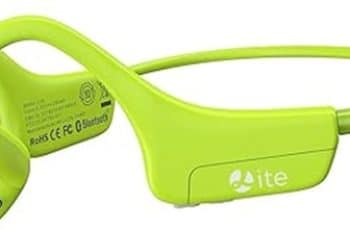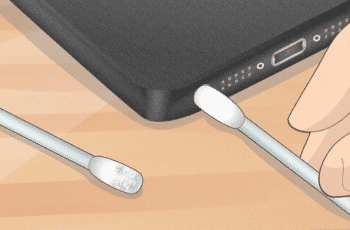Today’s noisy atmosphere makes hearing protection vital. Protect your hearing whether working, listening to loud music, or relaxing. Ear plugs and muffs protect hearing. This essay will compare hearing protection’s pros and cons to help you with Ear Plugs and Ear Muffs Option To Reduce Noise.
American employees are subject to decibel limitations imposed by the Occupational Safety and Health Administration (OSHA) throughout their 8-hour shifts. The maximum allowable exposure to noise according to OSHA regulations is 90 A-weighted dBA for 8 hours. However, the organization also notes that the worker’s permissible exposure duration drops by 50% for every rise of 5 dBA in noise level.
To illustrate, an employee can withstand 90 dBA for 8 hours but only 95 dBA for 4 hours before irreversible hearing loss. Unless they have adequate earplugs. Ear plugs and muffs are popular hearing protectors. This article will discuss the benefits and downsides of each choice and help you pick the best Ear Plugs and Ear Muffs Option To Reduce Noise
How to Find the Right Ear Muffs
You may be wondering what kind of hearing protection can lessen the amount of noise getting to your ears while still being convenient to wear if you have to deal with annoying but unavoidable noise at work or at home.
Equipment that can protect your hearing
Earplugs, earmuffs, and canal caps are all examples of ear protectors that work to lessen the impact of loud noise on your hearing. Use earplugs or earmuffs if you have to be in a noisy environment.
Attenuation is the word used to describe the amount of noise reduction achieved by using earplugs. Decibels (dB) or a single simplified noise-level reduction (SNR) figure are the units of measurement for attenuation. The SNR of most commercially available earplugs, for instance, is somewhere between 25 and 32 dB.
When Earplugs Are Necessary
When in a noisy environment, it’s important to safeguard your hearing by using earplugs:
- while working
- When you tune in to certain tunes
- you like activities that generate a lot of noise, such as racing, concerts, woodworking, or shooting sports.
Functioning of Ear Muffs
If you want to keep your hearing intact, the earplugs you wear must block out enough noise. Typically, the package will include the frequency range covered and the attenuation offered.
Most provide superior defense against the harmful effects of higher frequencies (between 4 and 8 kHz). Keep take mind that the indicated attenuation is likely an overestimate given that the tested devices would have been used in perfect conditions with brand-new, well-fitting covers.
How comfortable are ear protectors?
For extended periods of time, earplugs are preferable, however high-attenuation earmuffs may be necessary due to excessive noise. If you are sometimes exposed to noise, earmuffs or canal caps are more practical since they are simpler to put on and take off. Combining earmuffs with earplugs is recommended for very loud environments. This often adds 10–15dB of protection over only using one or the other.
Between Ear Plugs and Ear Muffs for Noise Reduction Deciding what type of earplugs to choose
If you want your earplugs to really block out noise, look for an SNR rating of 20 dB or higher. Ear plugs should be of a kind specifically designed to prevent hearing loss. Many earplugs offered in drugstores and sporting goods stores are not intended to properly protect against dangerous levels of noise since they are meant for swimming or to eliminate bothersome background noise.
Earplugs, single-use
Earplugs designed for single use should be comfortable and easy to insert. Common materials include foam, mineral wadding, and flexible silicone. You have to wrap most disposable earplugs between your fingers, push them into your ear, and keep them there until they expand and seal your ear canal. Regular cotton batting shouldn’t be used here.
Earplugs that may be used several times
Common materials for reusable earplugs include foam, soft plastic, and rubber. They are reusable after being cleaned. Earplugs that are pre-molded for several uses are more durable than disposable ones and do not need rolling to fit in the ear. However, they may not provide as much protection as earplugs manufactured specifically for you because of how loosely they fit.
Custom-made earplugs
Earplugs may be created in order to provide a snug fit in the ear canal. Their high price tag is justified by the improved comfort and reduced noise pollution that result from a custom fit. Because they might endure for years, they could be more cost-effective in the long run than single-use earplugs.
Earplugs for musicians
To ensure that music is heard at appropriate but safe volumes, musicians’ earplugs are equipped with acoustic filters that dampen sound at certain frequencies. The earplugs shield the wearer from potentially hearing-damaging decibel levels while yet allowing for an unaffected listening experience. Get in touch with the Musicians’ Union or the British Association for Performing Arts Medicine if you want to learn more about the relationship between music and noise.
Ear protection for gunmen
Earplugs designed to muffle explosive sounds, like gunshots, are commercially available. These do not completely block out loud noise, but reduce it to a safe level while allowing normal hearing at lower volumes. Some are electrical, while others are made of unique materials or use specialized filters.
Earmuffs
Ear protectors resemble huge headphones. Hard cups with plush cushions seal to your head and fit over your ears. Standard variants offer equivalent protection to earplugs, however, higher-attenuation earmuffs are available. Certain earmuffs have identical attenuation at all frequencies, making speech and alarms easier to hear.
Earmuffs with neckbands may be used with face shields or helmets, and those with folding headbands are easier to carry and store. Helmet-mounted earmuffs are also available. Some earmuffs only activate at high volumes. These electronic earplugs work like shooters’. Earmuffs with radio or audio systems may communicate.
Canal caps
Earplugs often have a chinband or headband connected to them so that they may be worn around the neck and quickly slipped into the ear canal as necessary. When dealing with noise that is intermittent, canal covers are helpful.
Ear Plugs: Pros and Cons
Ear plugs are tiny, soft devices that are inserted into the ear canal to block unwanted noise. There are benefits and drawbacks to using them, but they do an excellent job of blocking out ambient sounds.
Pros:
- Lightweight, small, and portable, earplugs are a convenient accessory to have on the go. They are perfect for on-the-go usage since you can easily carry them in your pocket or purse.
- Ear plugs are pleasant because they may be molded to the exact shape of your ear canal. Many are manufactured from cushiony foam or silicone for a nice, smooth touch.
- Earplugs are adaptable since they come in a wide variety of materials and designs, from disposable foam to reusable silicone to specially molded plugs. With so many options to pick from, you can choose the one that works best for you.
Cons:
- While earplugs are great for blocking out unwanted noise, they may also degrade the clarity of the sounds you hear. Your capacity to perceive the subtleties of music and speech may be compromised if particular frequencies are masked.
- Problems with InsertionEarplug efficacy relies on their correct insertion. It may take some practice, particularly for first-time users, to get a comfortable and secure fit.
Ear Muffs: Pros and Cons
Ear muffs are devices worn over the ears that completely enclose the ear canal to muffle ambient sounds. When compared to earplugs, they have several distinct benefits and drawbacks.
Pros:
- Ear muffs provide a superior level of protection against harmful noise levels compared to ear plugs. Due to the fact that they act as a physical barrier, they are well-suited for highly noisy settings.
- Ear muffs don’t need to be inserted into your ears in any unique way or fitted, so they’re really easy to use. They’re a great option for those who have trouble getting earplugs in properly.
- Ear muffs are designed to reduce pain from prolonged usage by equally applying pressure around the ears.
Cons:
- Ear muffs, in comparison to ear plugs, are bulkier and less convenient to carry about. They could be less practical to transport or utilize in some contexts.
- The accumulation of heat and perspiration around the ears from wearing ear muffs for long periods of time may be uncomfortable. In warmer climates, this problem may become more apparent.
- Interference with Eyewear or Headgear: Some people may find it difficult to establish a comfortable fit when combining glasses, helmets, or other headgear with ear muffs.
Ear Plugs and Ear Muffs FAQs
What are the main differences between Ear Plugs and Ear Muffs?
Ear plugs and ear muffs both serve to protect the ears from excessive noise, but they do so in different ways. Ear plugs are small devices that are inserted into the ear canal to block out sound. They are compact, discreet, and ideal for continuous wear or for sleeping. On the other hand, ear muffs are worn over the ears, providing noise reduction by covering the entire outer ear. They are usually adjustable, more durable than ear plugs, and can be easily put on and removed, which makes them practical for intermittent use. However, they may be less comfortable for long periods of time and may not provide as much noise reduction as ear plugs, depending on the specific models compared.
Which offers better protection from noise, ear plugs or ear muffs?
The level of protection offered by ear plugs and ear muffs largely depends on the specific product and its Noise Reduction Rating (NRR). In general, both can provide substantial protection from noise. Ear plugs, when inserted correctly, can often provide higher levels of noise reduction. However, ear muffs are easier to use correctly, and improper use of earplugs can result in significantly reduced protection. The best choice will depend on the situation, the person’s comfort preferences, and the level of noise exposure.
Can ear plugs and ear muffs be used together for enhanced protection?
Yes, ear plugs and ear muffs can be used together for enhanced noise protection. This is commonly done in extremely noisy environments where a single form of protection is not sufficient. Wearing ear plugs and ear muffs together can provide a higher level of noise reduction than wearing either alone. However, the combined noise reduction is not simply the sum of the NRR of the ear plugs and ear muffs. A general rule of thumb is to add 5 dB to the higher NRR of the two products to estimate the total NRR when used in combination.
Conclusion:
Selecting the appropriate hearing protection is essential for keeping your hearing secure in a wide range of situations. There are benefits and drawbacks to using both ear plugs and ear muffs. While ear muffs provide superior noise suppression and convenience, ear plugs are more portable, adjustable, and comfy. Noise intensity, comfort, length of usage, frequency of noise, surroundings, and compatibility with other equipment are all important considerations.
Ear muffs and ear plugs are two forms of hearing protection that might come in handy. Putting on ear muffs on top of ear plugs is one way to further shield your hearing in dangerously loud environments. Furthermore, one may be preferable to the other based on the user’s tastes and circumstances.
Always keep in mind that your hearing is a valuable sense that needs to be protected, and be sure to use and maintain your hearing protection according to the manufacturer’s recommendations. Protecting your hearing will allow you to live in a more serene setting and reduce the likelihood of permanent impairment.
Related Categories:
- Best gaming headphones under 200
- Best gaming earphones under100 review rating
- best invisible Bluetooth earbuds










